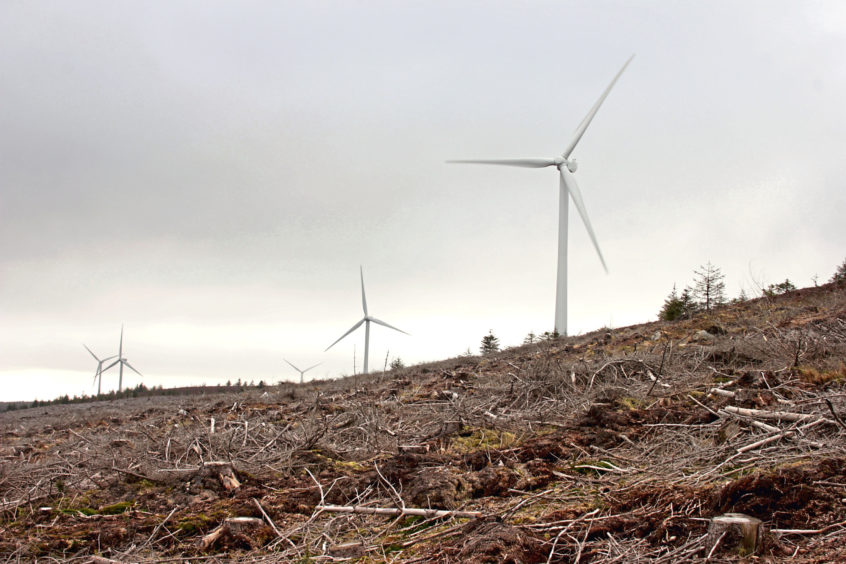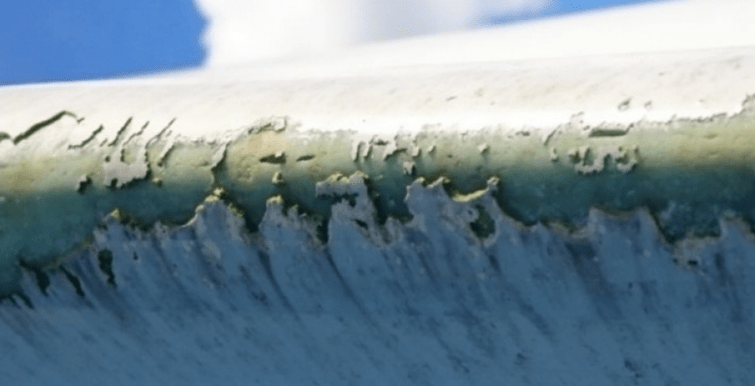For a taste of your wind ‘powered’ future, look no further than the Scottish Highlands – where some 4,500 of these things have polluted a once majestic landscape.
Traverse any Highland Glen these days in the hope of finding peace and tranquillity, and you’ll be hard-pressed to avoid Scotland’s hundreds of wind factories and their looming industrial presence. To make way for them, more than 17,000 acres have been cleared and 14 million trees have been clear-felled in the process, adding to a morbid sense of pointless, industrial-scale environmental destruction.
But, right now, it’s another feature of these 300-tonne monsters and their 50-60m blades that has highlanders up in arms.
And that’s their habit of constantly shedding toxic microplastics and spreading them far and wide.
Ben Borland reveals that littering the landscape with toxic plastic junk with complete impunity, is yet another example of how the wind industry gets a free kick on every environmentally harmful aspect of their subsidy-soaked operations.
Wind farm fears as SNP ministers admit they don’t monitor ‘toxic’ leading edge erosion
Scottish Daily Express
Ben Borland
1 January 2023
Energy minister Michael Matheson also admitted that no wind farm operators have been fined for failing to maintain their turbines and there is no scheme in place to monitor microplastic pollution.
A Scots Tory MSP has hit out after the SNP Government admitted it had no idea how many of Scotland’s 19,000 wind turbines may be releasing dangerous chemicals.
There have been concerns for years about the environmental impact from the erosion of microplastics from the colossal turbine blades, which are made with fibreglass and epoxy resin.
One of the chemicals is called Bisphenol A, which has been linked with fertility problems in humans and wildlife. Campaigners say a single turbine can emit up to 62 kilos of microplastics annually, although this is disputed by the renewables industry.
Highlands and Islands MSP, Donald Cameron, has attempted to find out more information about the issue with a series of questions at the Scottish Parliament.
In one, he asked the Scottish Government “how it currently monitors leading edge erosion on wind turbines, and whether it has any plans to increase this monitoring”.
Energy minister Michael Matheson replied the SNP-Green administration “is not responsible for taking action in this area”.
Mr Matheson also said the Scottish Government “does not provide funding for continued maintenance of wind turbines” and “has not issued any fines relating to the failure to maintain wind turbines”.
Finally, the Conservative MSP asked the “Scottish Government whether it has any plans to conduct a study on the impact of microplastic pollution and toxic compounds from wind turbines”.
Once again, the minister replied in the negative. “The Water Framework Directive does not currently include the requirement for the monitoring and assessment of microplastic pollution and specifically Bisphenol A in the water environment,” he said.
Speaking to the Scottish Daily Express, Mr Cameron said: “The dangers of microplastics and toxic substances from wind turbine erosion are well-documented, so it’s surprising that the SNP Government isn’t even bothering to monitor this.
“Despite their enthusiasm for windfarms, it appears that the SNP have washed their hands of any potentially harmful effects wind turbine erosion might have on the environment.
“The responsibility for wind turbine maintenance may lie with private companies, but the SNP must at the very least monitor the state of Scotland’s turbines and sanction any companies that don’t comply with safe upkeep.
“Otherwise we could end up facing an environmental hazard as a result of the very same turbines that are supposed to be helping us tackle climate change.”
Scottish Daily Express



150g per turbine x 19,000 = 2.85 tons a year of micropollutant spread all around Scotland. It goes up to 57 tons when considering the 20-year lifetime of these things. I guess responsible authorities would at least check the Bisphenol A concentration in dairy products, wouldn’t they?
Reblogged this on whatyareckon and commented:
Coming to your and my backyard soon!
Yet another example of the remedy being more harmful than the problem, thanks to “experts”.
There’s a lot of it about…
Wind farm protagonists see what they want to see and move on. However in a conversation with a green environmentalist recently, when I brought up the subject of how many millions of tons of insects they kill each year, it pulled them up. They started to move on to solar farms and how the sheep can graze under them! It seems for a moment at least, I got through to them. Clearly the weekly newsletter they were receiving from Greenpeace hadn’t touched on that particular subject!
Further to my comment above, the yearly insect fatality numbers equate to thousands of tonnes per year, not millions. But that also represents billions of individual insects! It was an STT article among others that first drew my attention to this. Kill the insects and you upset the food chain. This can also lead to species extinction. How ironic that climate cultists now preach that we should be eating insects! Is this a distraction to draw attention away from how many insects are killed or clipped by wind turbines each year? Blades are also getting longer so the kill zone areas are increasing. Hypocrisy doesn’t even begin to cover it.
An additional point in relation to the article above. As the blade edges erode over time, the turbines can become noisier. They can make a whining tone that varies in pitch. These sounds could potentially breach noise permits as they can continue for longer than the 10 minute intervals the industry uses to try to hide intermittent noise!